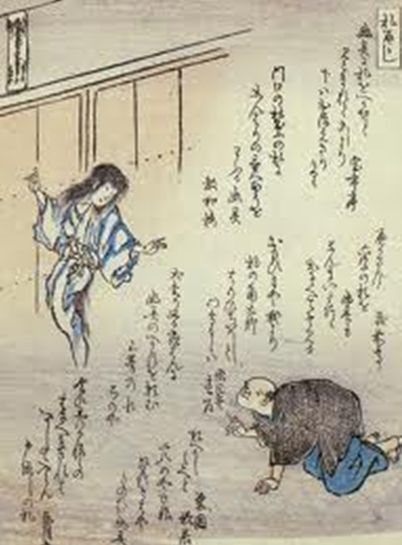Translated from Sore de Honto?
To learn much more about Japanese Ghosts, check out my book Yurei: The Japanese Ghost
The gentle drops of falling rain. A lonely willow tree standing near a graveyard. And a Japanese ghost, called a yurei, waiting below. This is our image of a yurei, and when we imagine this picture of the yurei, it has no feet.
The uniform image of a yurei has come from the Middle Ages to the modern day. But in the earlier days, at a time when people were mortally afraid of the power of spirits, yurei actually had feet.
The image of a footless yurei, known as the ashi ga nai yurei, became established in the Edo period by kaidan tales like “Yotsuya Kaidan” and “Bancho Sarayashiki.” But even before these kaidan, the footless yurei had gained popularity in the works of artist Maryuama Okyo. (1733-1795). His paintings were so overwhelmingly popular that they influenced the designs of the kabuki stage, until Okyo’s image of the yurei became the accepted form of Japanese ghosts.
But why did he paint his yurei without feet? There are several proposed explanations. One says that his images were drawn in dim light, that only illuminated the top half of the person leaving the legs and feet in darkness. Keio University professor Ikeda Yasaburo proposed the theory in his book “Nihon no Yurei” that Okyo was inspired by the haze of incense smoke rising into the sky, and drew his yurei as if they were half composed of this smoke. Another theory looks at the long robes of Bunraku puppet theater which hide the feet of female puppets. Kabuki theater took inspiration from Bunraku, and it is possible that the hidden feet of the puppets was adopted into live theater. It is most likely that from one or more of these explanations comes the popular image of the footless Japanese ghost.
…and yet, it cannot be said that all yurei are footless. You can often hear the sounds of ghostly footsteps in traditional kaidan stories. In the popular kaidan Botan Doro the arrival of the yurei Otsuyu is announced by the karan, koron of her wooden geta sandles. And in Noh theater, many of the ghostly characters sport magnificent footware.
Further Reading:
To read more about Japanese ghosts, check out:




Recent Comments